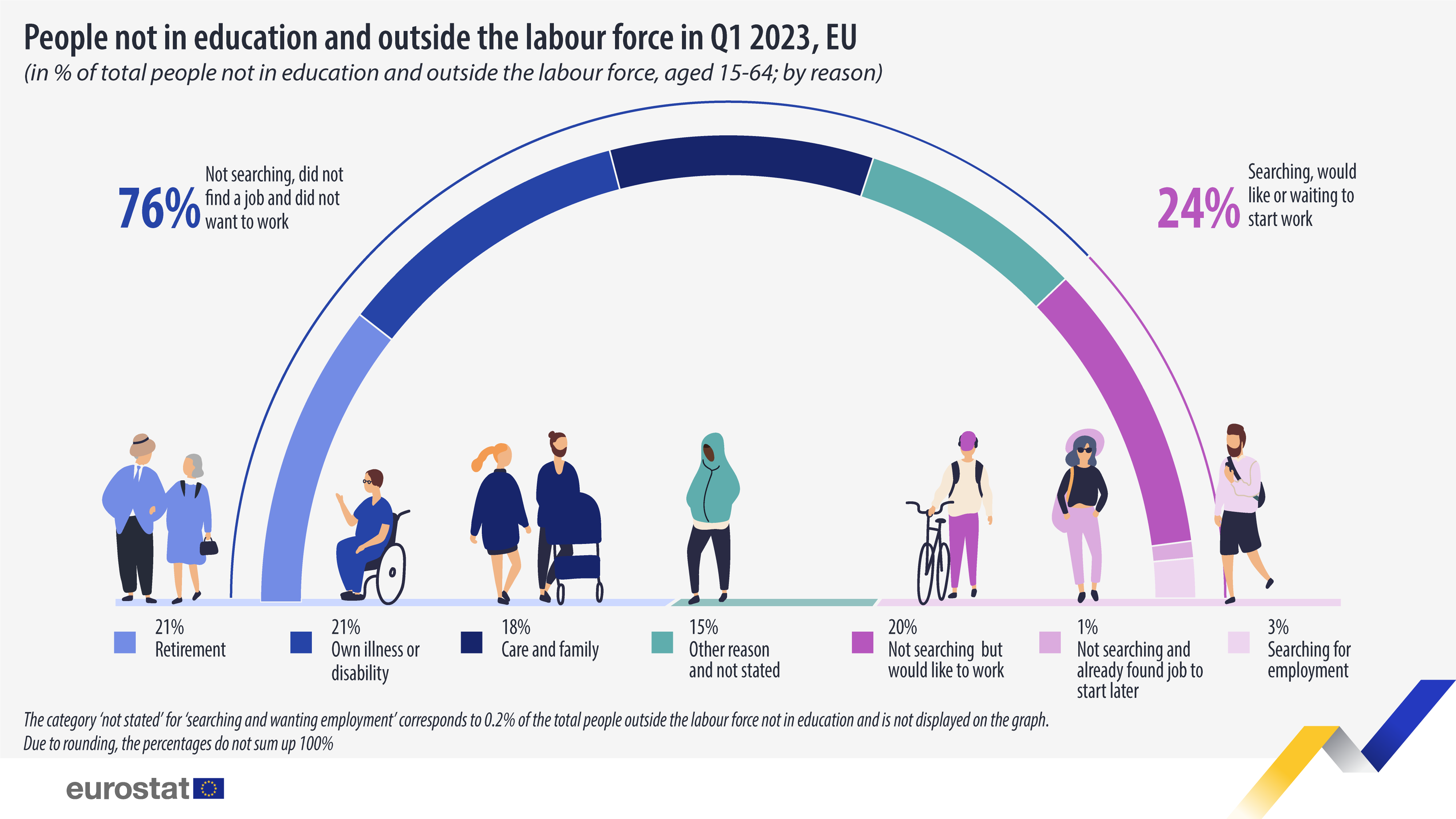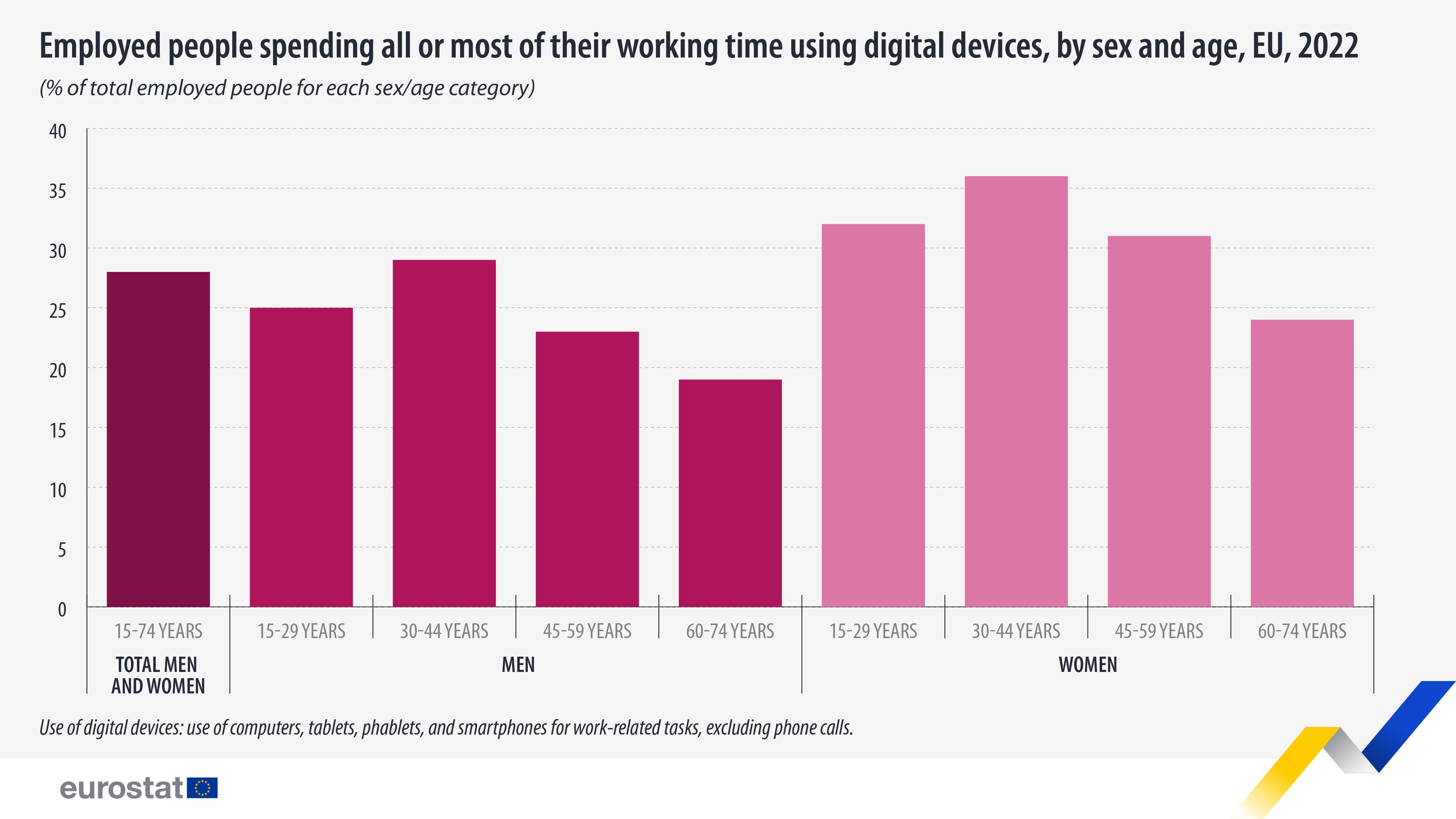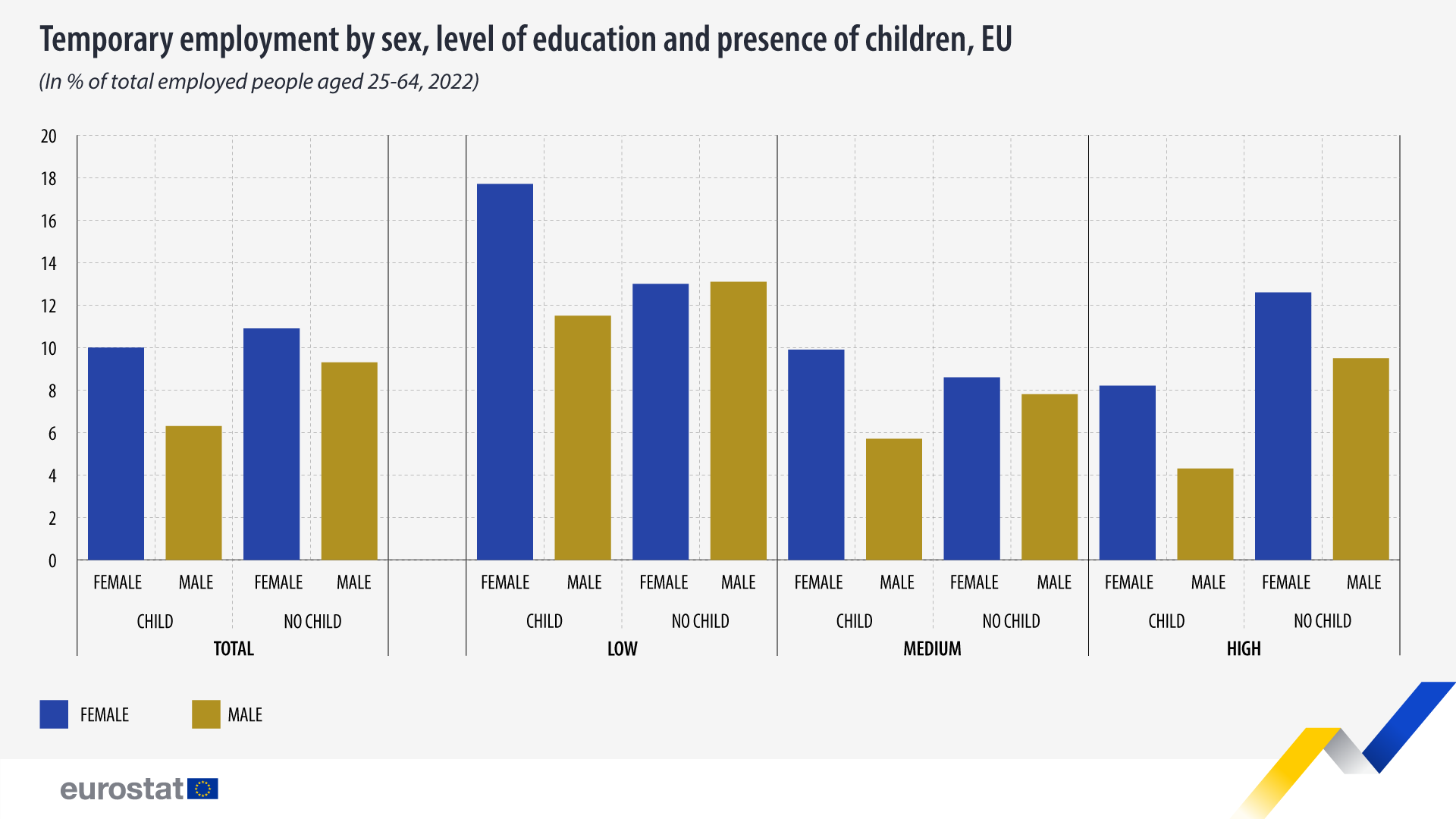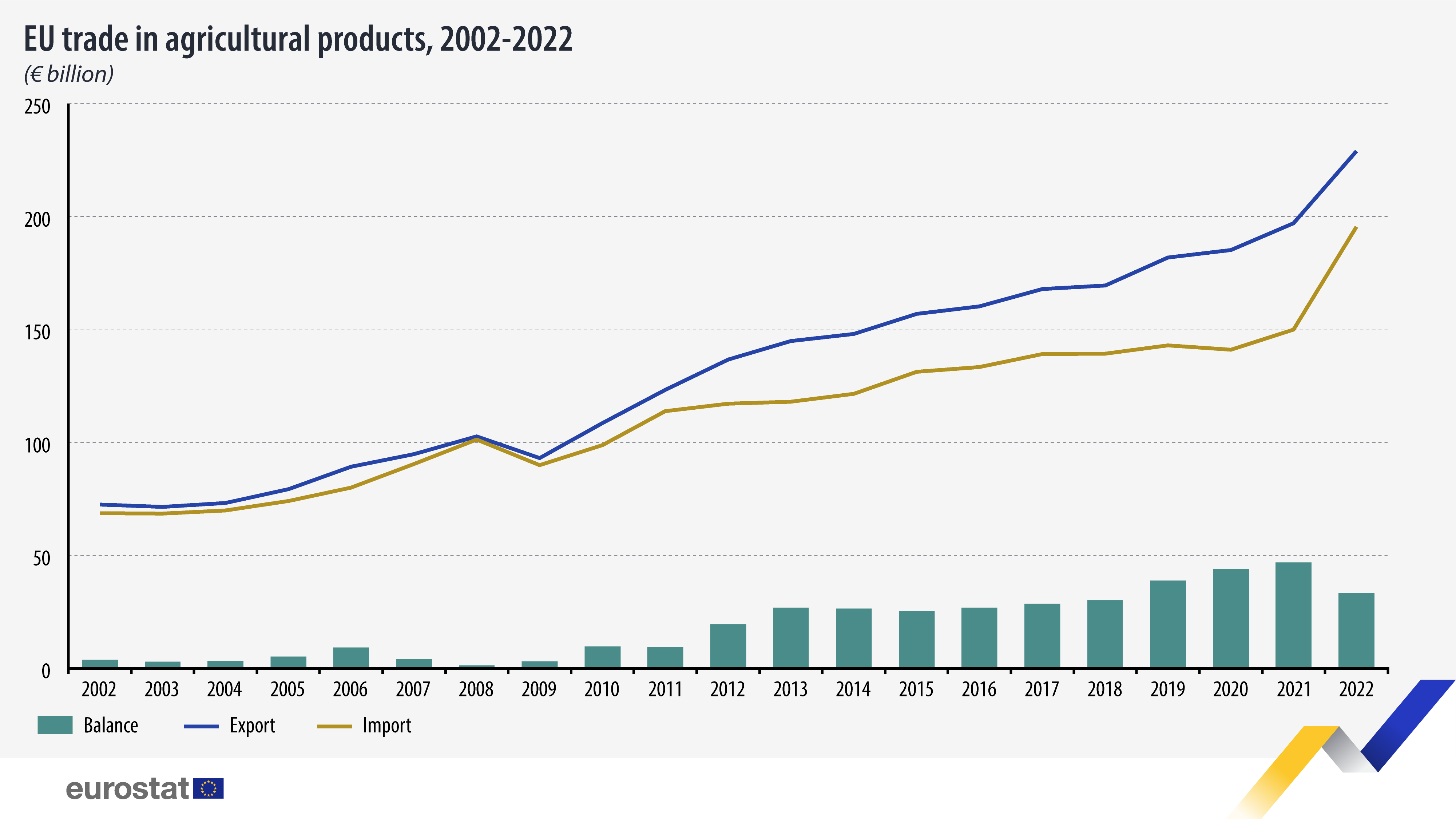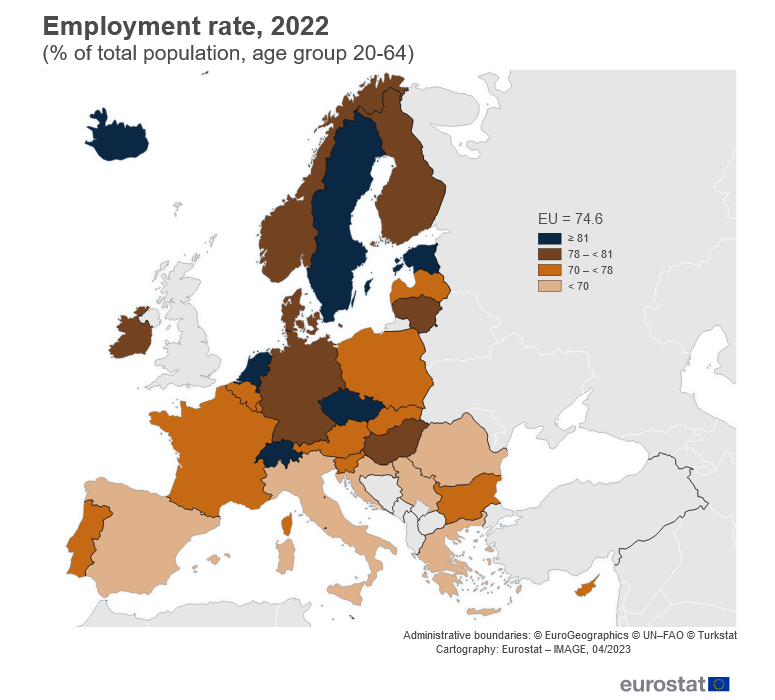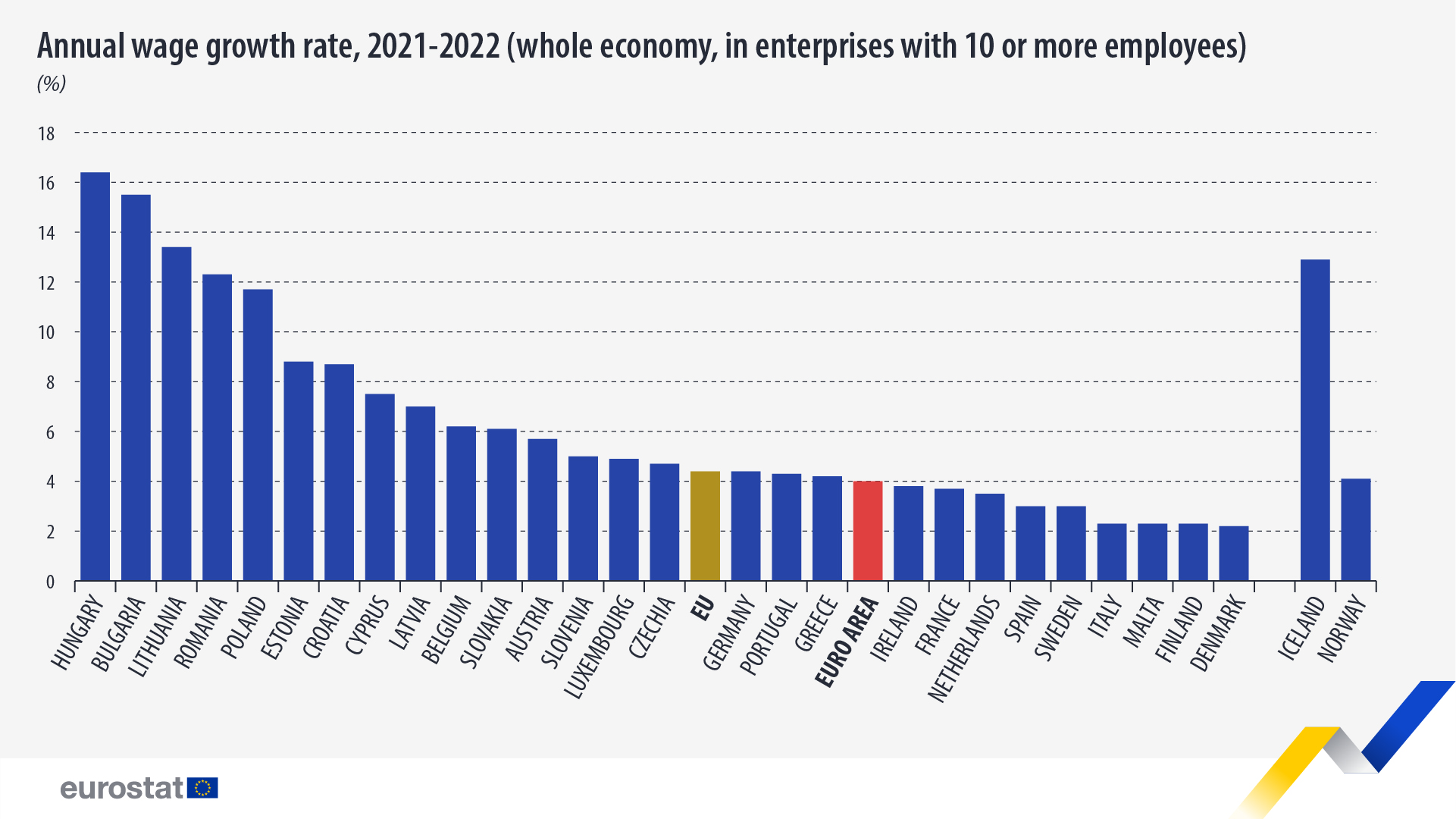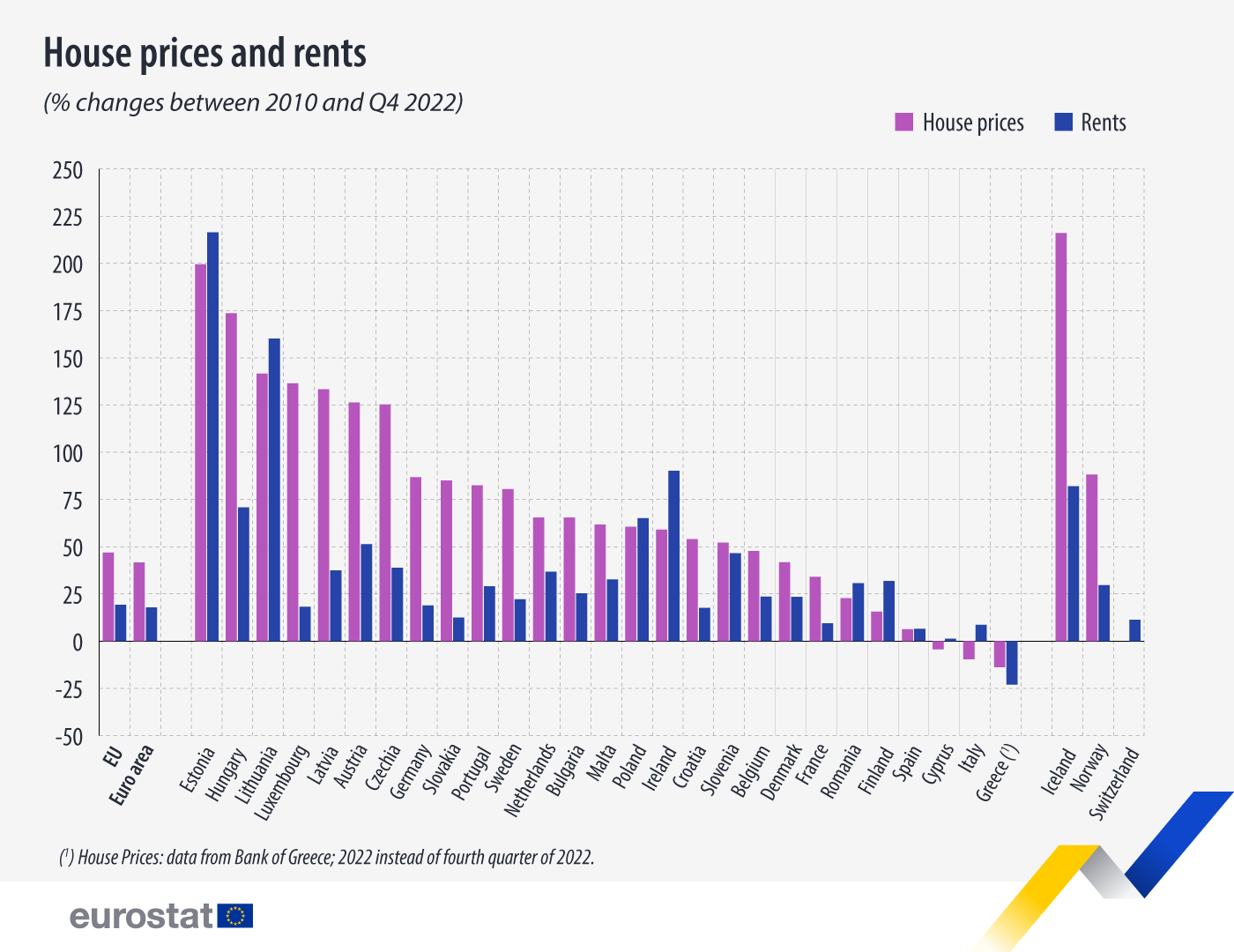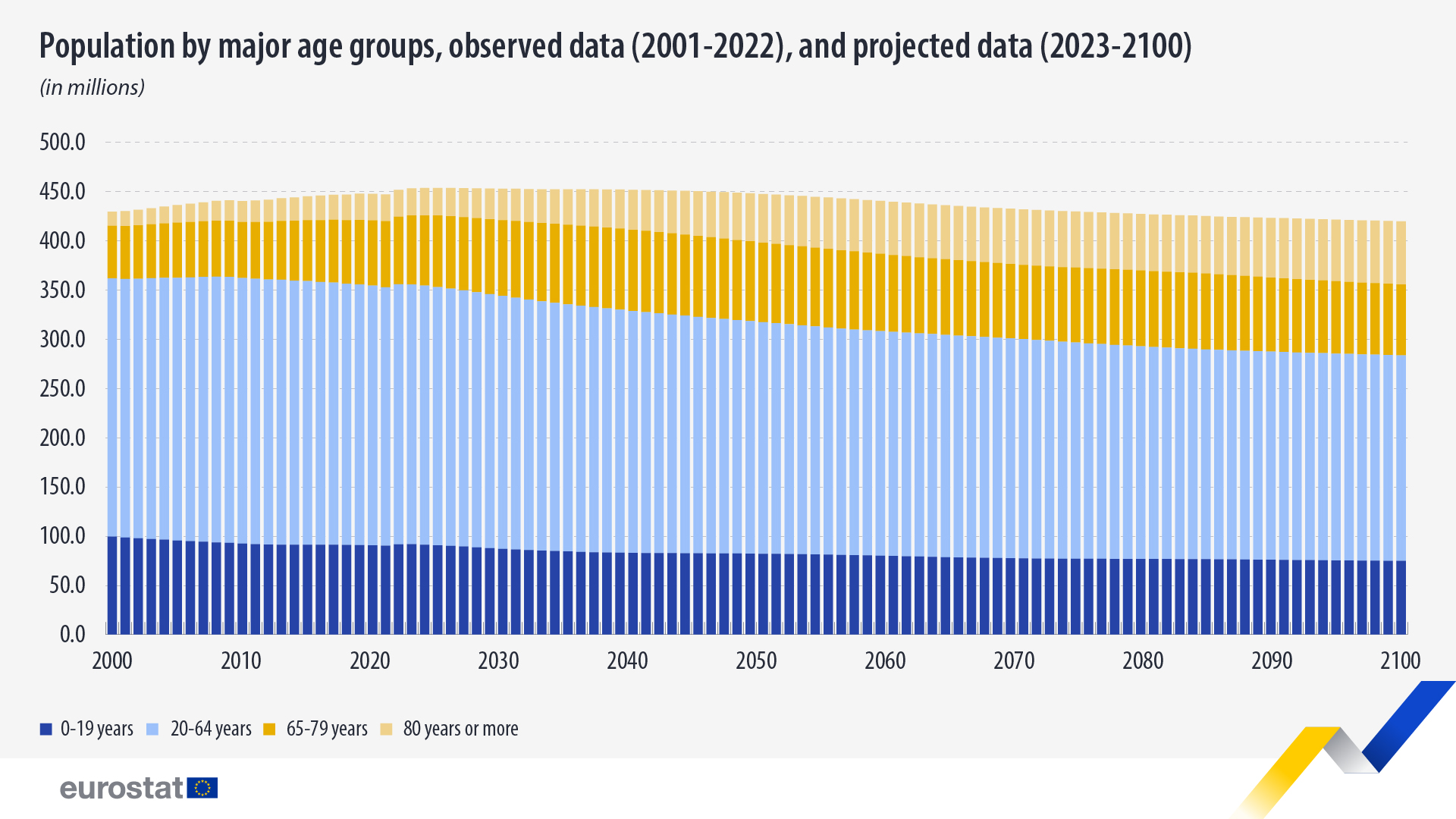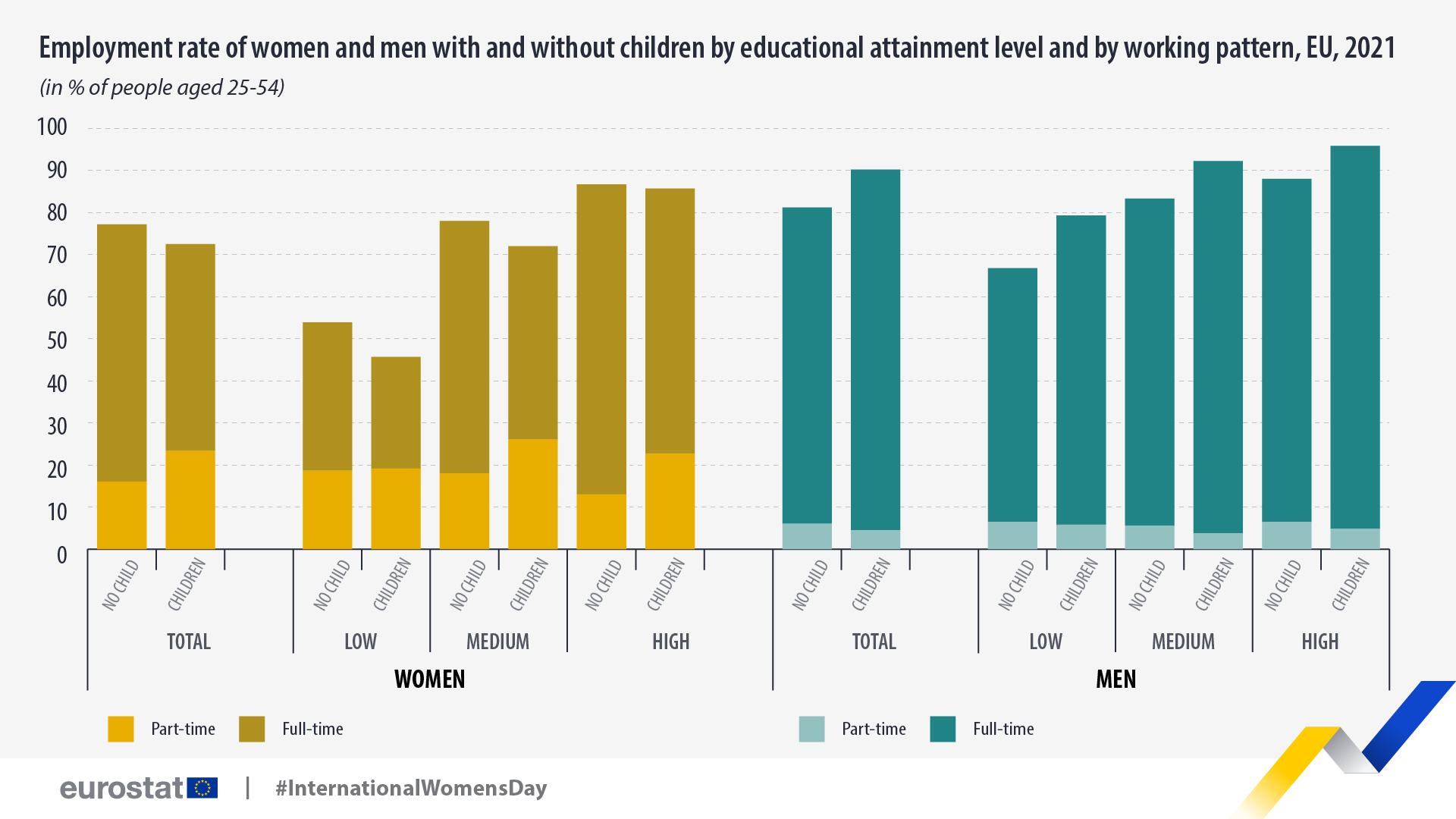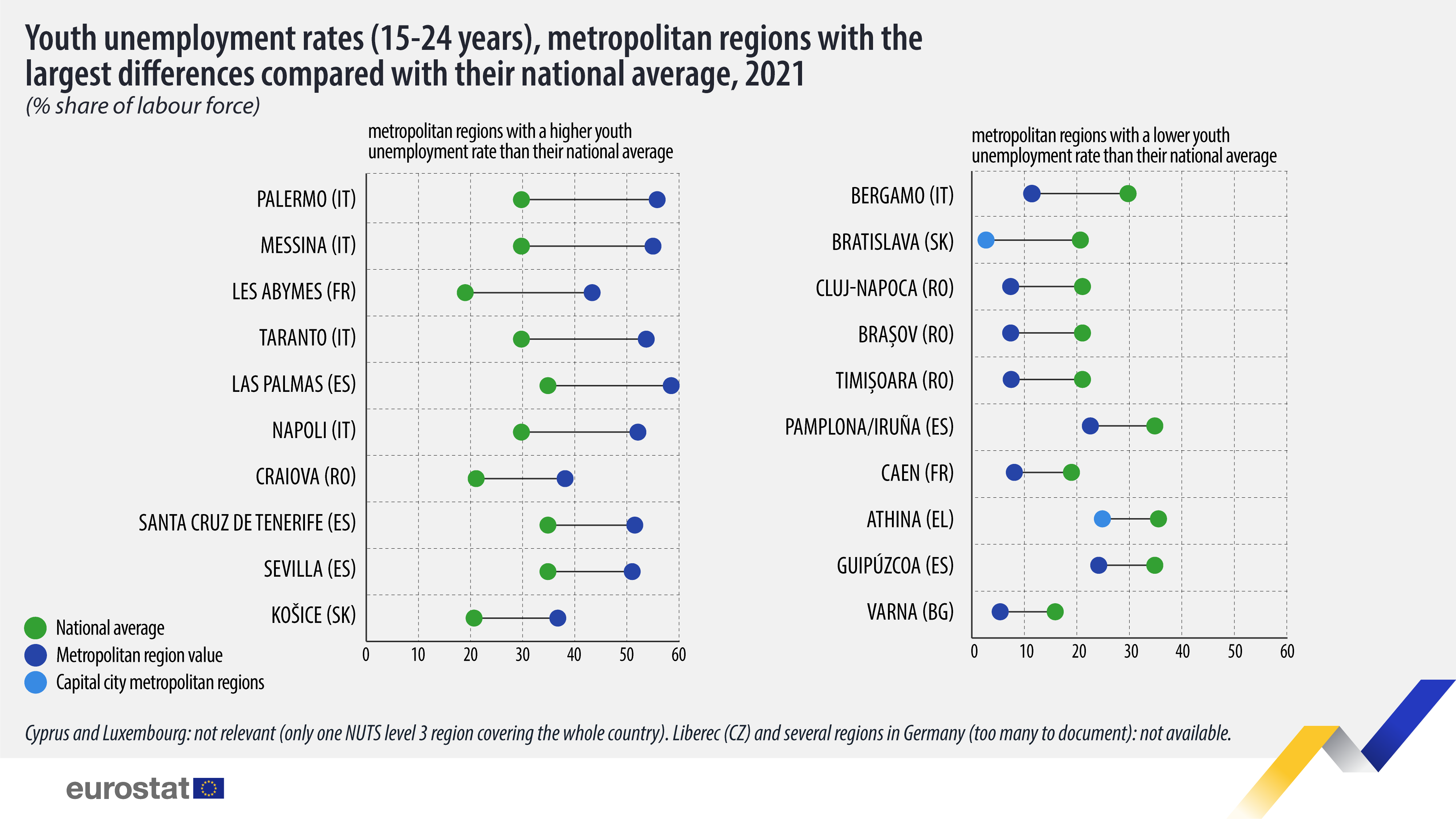In the first quarter of 2023, among people aged 15-64 who were not in education, slightly more than 8 in 10 were in the labour force (81.8%).
Statistics
In 2022, nearly 30% of employed people in the EU aged 15-74 reported using digital devices for the entirety or most of their working time.
In 2022, 24 million people worked under a temporary contract in the EU (12% of total employed people aged 15-64).
In 2022, the value of trade (imports plus exports) of agricultural products between the EU and the rest of the world reached €424.7 billion, €77.5 billion more than in 2021 (€347.2 billion).
In 2022, 75% (193.5 million) of the EU's 20-64-year-olds were employed, the highest share recorded since the start of the time series in 2009.
In 2022, the average hourly wages and salaries in the whole economy were estimated to be €22.9 in the EU and €25.5 in the euro area.
In the fourth quarter of 2022, rents and house prices in the EU increased compared with the same period in 2021, with a 2.5% rise in rents and a 3.6% increase in house prices.
According to the latest population projections issued by Eurostat, the EU’s population will decrease by 6% between 1 January 2022 and 1 January 2100, equivalent to 27.3 million fewer people.
In 2021, 77% of women aged 25-54 without children were employed in the EU. On the other hand, women of this age with children had a lower employment rate (72%; -5 percentage points).
In 2021, there were 3.0 million unemployed young people (aged 15-24 years) in the EU and the youth unemployment rate was 16.6%.
